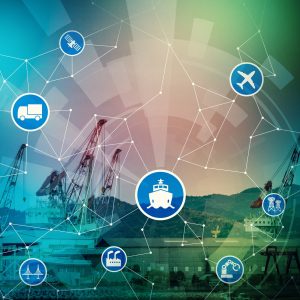
You wouldn’t have much confidence in your flight if a control tower wasn’t monitoring the comings and goings of everything relevant to takeoff, air time, and landing. It’s not much different with your supply chain: a control tower approach lets you see and adjust how the chain is handling the constant variability in demand, production, and logistics that can jam up the best laid plans.
A control tower has become essential as the modern supply chain has become so complex. Customers order from an explosion of item selections across multiple channels; goods are produced along a global, multi-echelon chain; and pressures on delivery performance have led to an surge in warehouses, fulfillment centers, and 3PL providers—additional nodes that have to be monitored and optimized.
How to build the tower? Rob Barrett, principal in the procurement and operations advisory at KPMG, told Industry Week that he sees four key layers as critical for an architecture that can manage information flow, business processes, and decision making across the supply chain.
- An integration layer manages information flow between internal systems and external partners and data sources.
- A visibility layer aggregates the operational data to support business intelligence.
- The execution layer is the actual supply chain applications—demand and supply forecasting, order fulfillment, transportation management, etc.
- On top is the analytics layer, supporting what-if simulations and analysis.
Today’s control tower solutions are going beyond the early goal of visibility, according to Seth Lippincott. In Nucleus Research’s Control Tower Technology Value Matrix, he said the focus now is on aiding supply chain managers in working more closely with partners outside the enterprise to manage the entirety of the chain. Lippincott stated that this includes tools to automate supply chain corrections; machine learning to crunch historical data, unearth patterns, and make suggestions; prescriptive capabilities; and intercompany orchestration.
For example, one control tower solution on the market not only provides real-time transactional visibility—it uses predictive analytics to foresee issues, intelligent agents that prescribe actions to optimize the network and operate the supply chain autonomously, and live dashboards that monitor events for key roles across the enterprise. Another focuses on supply chain “orchestration” for better exception management. One vendor’s software combines data from its cloud-based network for global trade and supply chain management with AI and machine learning, so supply chains can become data-driven and self-learning to better identify issues and predict challenges. This solution senses if things are moving or not moving, compares that to normal states, and continuously observes flow to recognize pattern shifts and if any action may be necessary—which it prescribes, and measures the results.
Turns out, booking an order is not that much different than booking a flight: customers expect an uneventful ride, disturbances to be managed, and their orders or themselves to arrive on time. The control tower’s mix of human and machine intelligence to oversee operations is as vital to a high-performing supply chain as it is to a smoothly running airline.
